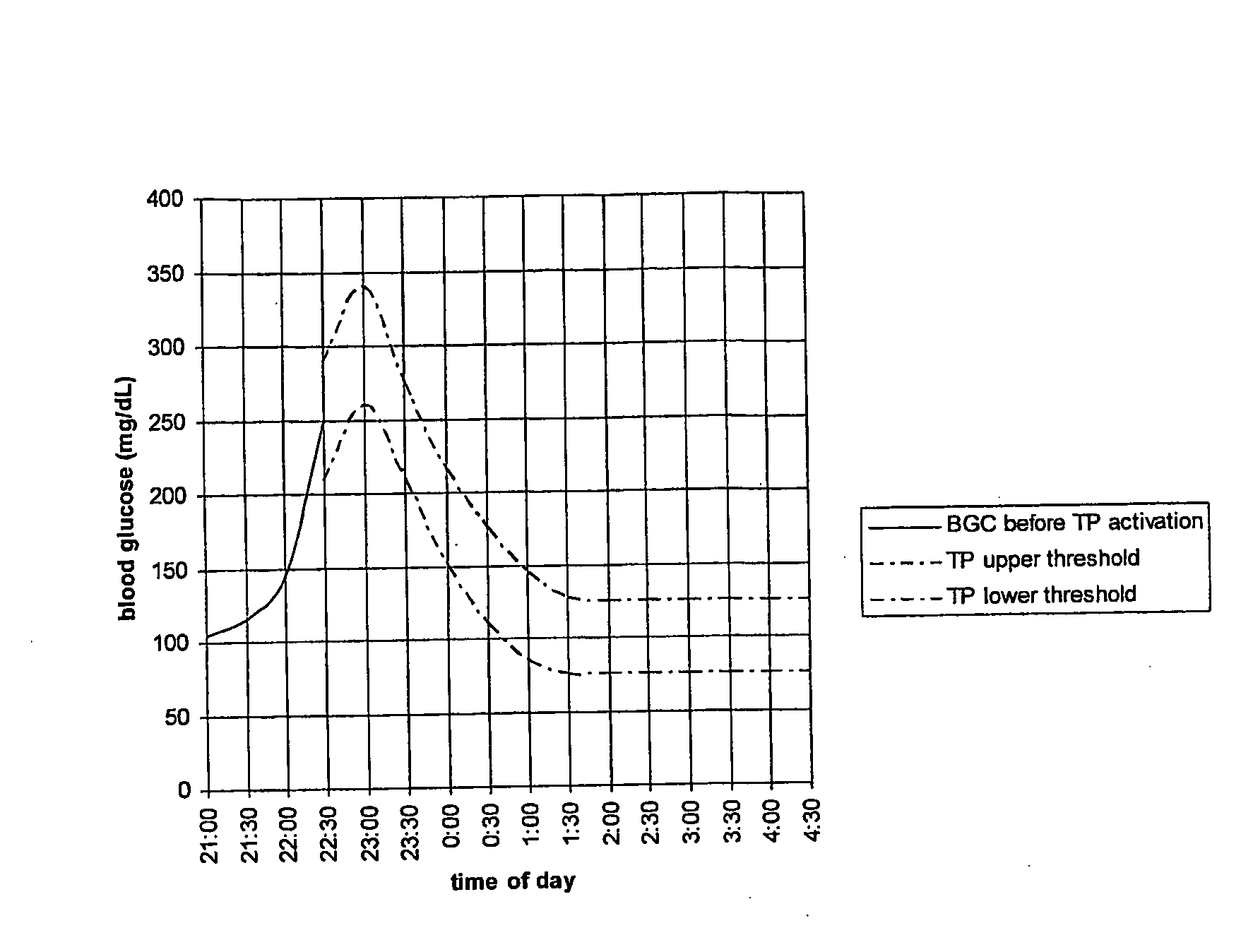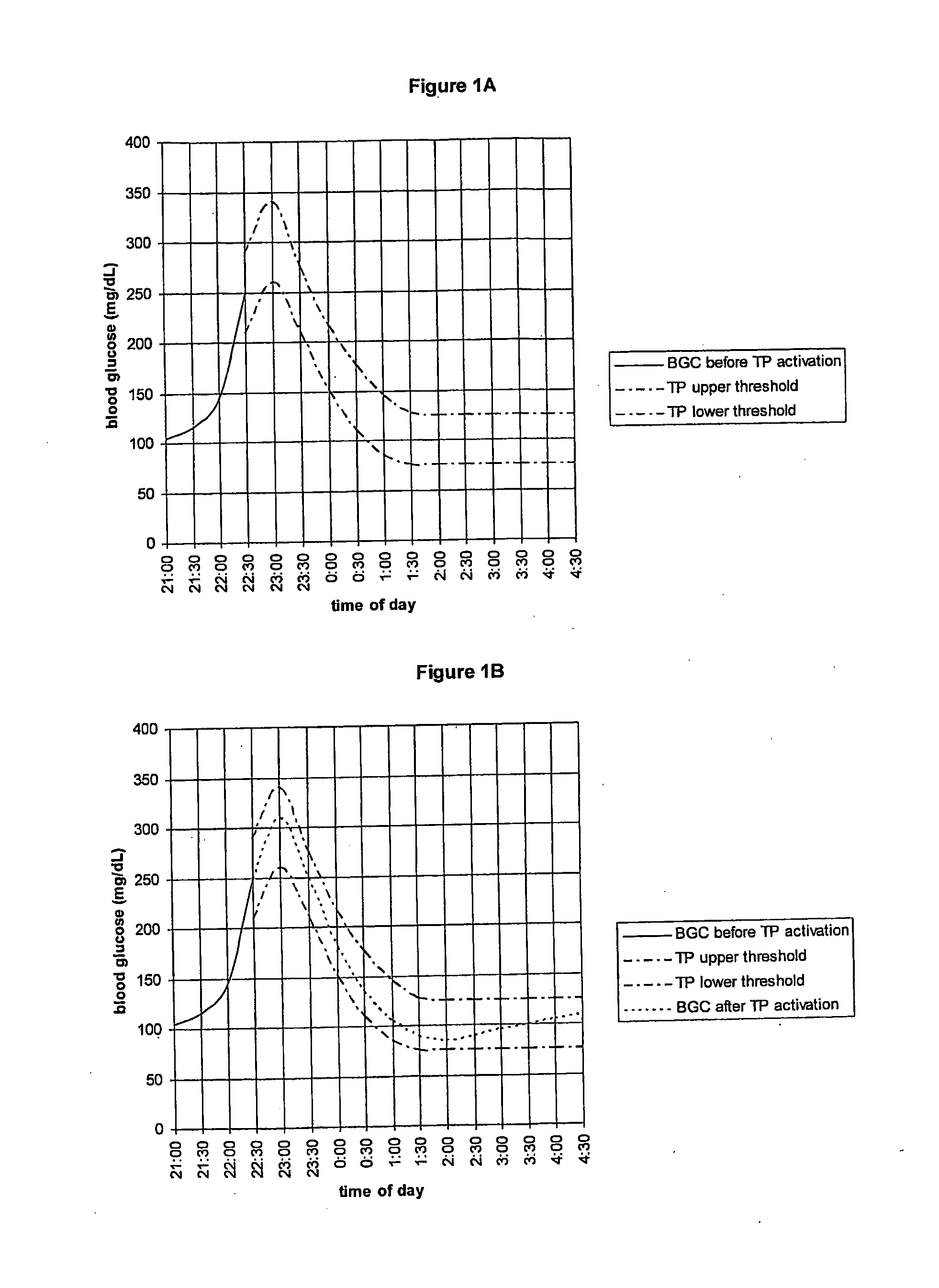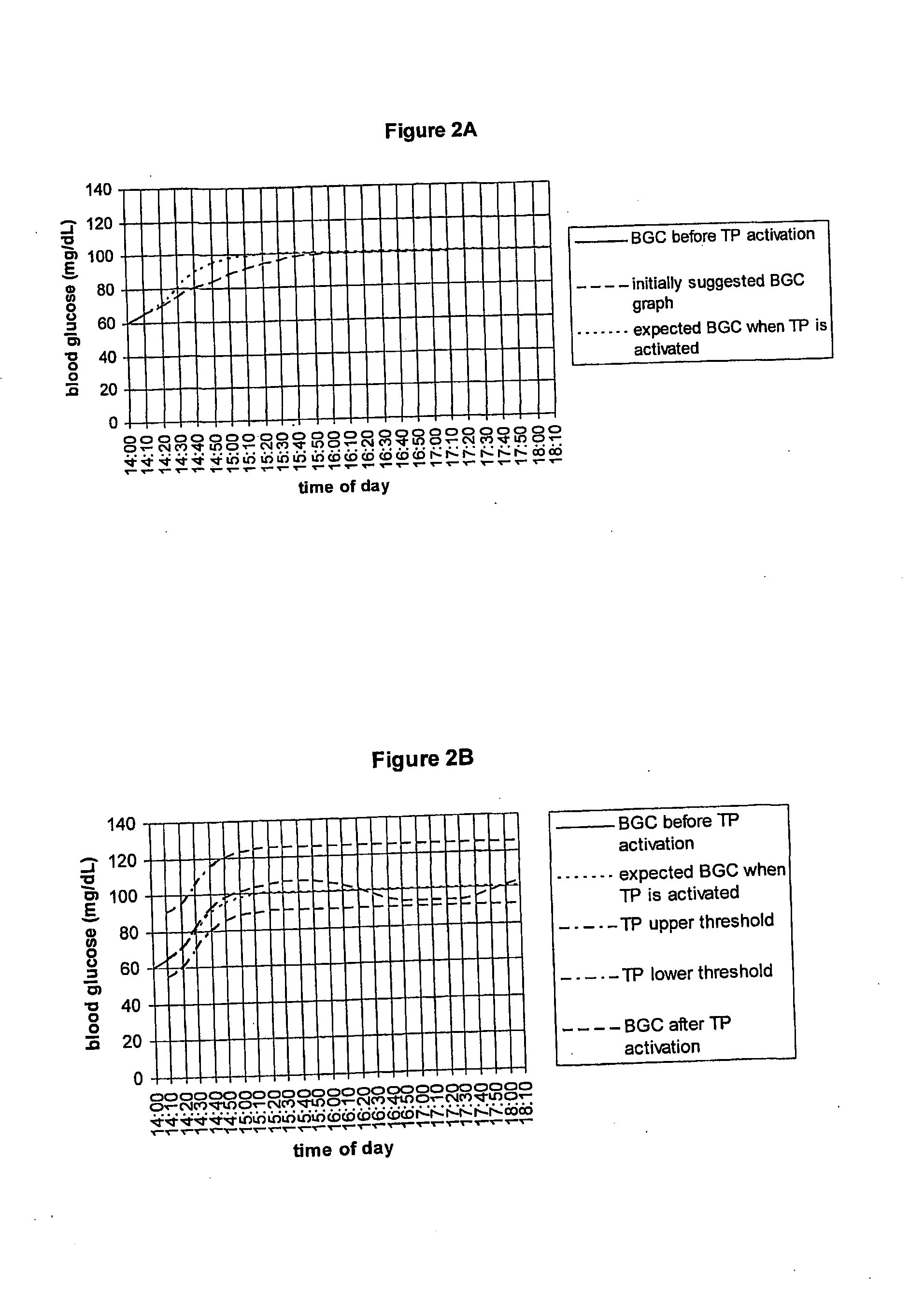Fluctuating Blood Glucose Notification Threshold Profiles and Methods of Use
- Summary
- Abstract
- Description
- Claims
- Application Information
AI Technical Summary
Benefits of technology
Problems solved by technology
Method used
Image
Examples
example 1
[0107]Nicole manages her diabetes with an insulin pump and a continuous glucose monitor that, through a wireless connection, can employ her personal computer as the user interface. One night at home, just after a late dinner, her BGC unexpectedly rises rapidly. Nicole determines that her insulin infusion site has deteriorated, and by the time she changes her infusion set, her BGC is high and still rising. At 22:30, she views the evolution of her BGC on her personal computer, and with the mouse, she draws the upper and lower BGC threshold functions of a threshold profile (TP) based on her expectation that the insulin she has just bolused will take some time to reverse the rise of her BGC and still more time to return it to her target range (FIG. 1A). Because Nicole plans to go to sleep soon, she programs an alarm to ring loudly if her BGC crosses either threshold, but upon expiration of the threshold profile in six hours no sound will signal the default to a threshold profile with up...
example 2
[0108]Lindsey manages her diabetes with an insulin pump and a continuous glucose monitor that share the same user interface component. Lindsey removes her pump / monitor to play a soccer game after lunch, figuring that exercise will approximately offset the missing insulin. After the game, at 14:00, when Lindsey reconnects her pump / monitor, her BGC is 60 mg / dL, which is below her usual target range of 80-120 mg / dL, but it is rising at a rate of about 0.5 mg / dL per minute. Lindsey has a snack, boluses insulin, and at 14:10 she accesses a set of graphs of expected BGC functions suggested by her pump / monitor, which has already matched the functions in this set to her current BGC and its rate of change. Lindsey picks one function, but she feels that her snack will increase her BGC more rapidly than indicated by the function she has chosen, so she uses the buttons on her pump / monitor to select the function point at which her expected BGC crosses into her target range, and she moves that po...
example 3
[0109]Neil's toddler manages his diabetes with an insulin pump, a continuous glucose monitor, and his father's help. Neil carries a wireless auxiliary device that allows him to interface with his son's glucose monitor. Because his son is an unpredictable eater, Neil often waits until after his son has eaten most of his meal before he asks him to bolus insulin for it. Neil uses this strategy at a pool party, and as often happens, his son's BGC is high and rising by the time he receives insulin to cover the food. At 15:00 Neil uses a stylus to draw the upper and lower BGC threshold functions of a threshold profile lasting four hours on his wireless auxiliary device. The threshold profile predicts a maximum BGC of about 220 mg / dL in 60 minutes and then a decline into the target range (75-125 mg / dL) (FIG. 3A). Neil programs a pleasant chime and green flash of color for every quarter hour that his son's BGC remains between the thresholds that he has drawn, and he chooses a fire alarm sou...
PUM
 Login to View More
Login to View More Abstract
Description
Claims
Application Information
 Login to View More
Login to View More - R&D
- Intellectual Property
- Life Sciences
- Materials
- Tech Scout
- Unparalleled Data Quality
- Higher Quality Content
- 60% Fewer Hallucinations
Browse by: Latest US Patents, China's latest patents, Technical Efficacy Thesaurus, Application Domain, Technology Topic, Popular Technical Reports.
© 2025 PatSnap. All rights reserved.Legal|Privacy policy|Modern Slavery Act Transparency Statement|Sitemap|About US| Contact US: help@patsnap.com



